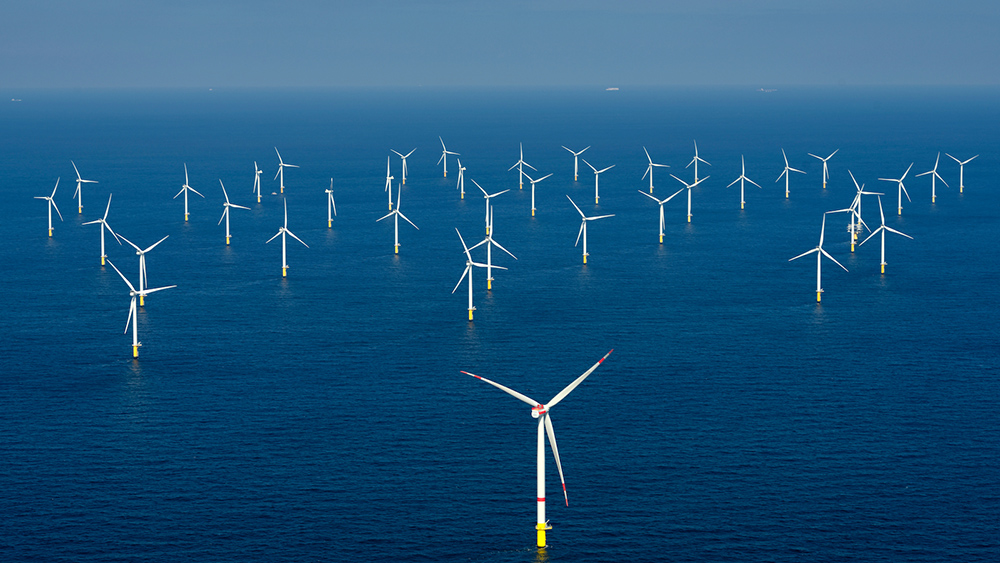GOP lawmakers seek a halt to study data
By Cindy Christy Ferstch
As the weather warms up along the shore, so do the conversations over offshore wind development.
An offshore wind technology conference was held at Rowan University in Glassboro last week to discuss the economic, environmental, and labor impacts of wind energy in New Jersey.
“Europe’s been ahead of this for three decades. They’ve been doing it and there’s a race around the world to try to turn back what’s going on with climate change,” said Steve Sweeney, former Senate president and chair of the Sweeney Center for Public Policy at Rowan University. “New Jersey is going to have the largest wind energy portfolio on the East Coast.”
Sweeney said the state’s central location gives it an advantage.
“We have the ability to supply the components for other states up and down the coast,” he explained. “At the end of the day, this is not about saving the environment, it’s really about boosting the economy. We’ve thousands of jobs that are going to come to this region – New Jersey jobs.”
During his time as Senate president, he directed nearly half a billion dollars to develop a manufacturing facility on the Delaware Bay. Construction is now underway at the Paulsboro Marine Terminal in Gloucester County and a manufacturing center in Lower Alloways Creek in Salem County.
At the same time, New Jersey Senate Republicans held an online hearing addressing concerns over survey work and recent whale and dolphin strandings at the Jersey Shore.
“We don’t know that offshore wind activities are causing these deaths. We don’t definitively know they’re not,” said Sen. Declan O’Scanlon.
“There’s no amount of collateral damage to these wonderful mammals that is acceptable,” said Sen. Michael Testa.
The panel was chaired by Sens. Anthony M. Bucco, Vince Polistina, Michael Testa and Declan O’Scanlon.

“It’s clear from the testimony we received that the wind farm projects were rushed, there’s data demonstrating real harm to marine life, and shore towns and fisheries will face serious economic impacts that have been completely ignored. We believe it makes a lot of sense to put a pause on these projects to investigate the legitimate concerns that were raised today in greater depth,” said Bucco.
GOP lawmakers said during a hearing last week that the state should stop efforts to build offshore wind turbines and track whether the number of whale deaths decreases during that time.
Testa told the New York Post “We heard from experts yesterday how the surge in whale deaths in recent months along the Jersey Shore coincided with the start of wind farm survey work in our waters.” He added “We also heard how the ‘unusual mortality event’ that NOAA [National Oceanic and Atmospheric Administration] has been tracking along the East Coast since 2016 has coincided with work on the wind farms off the coast of Rhode Island.
There certainly seems to be enough evidence to warrant a pause in the wind farm development to conduct a more thorough investigation.”
Tax incentives in President Biden’s Inflation Reduction Act launched an immense offshore wind development on the East Coast, where more than 3,000 wind turbines and roughly 10,000 miles of cable will be put in place.
Cindy Zipf, executive director of Clean Ocean Action, told lawmakers at the hearing that construction had “gone too far, too fast. We’re only beginning with the pre-construction now, and already, we’ve started seeing whales dying and washing up on our beaches.”
According to the Marine Mammal Stranding Center, eight whales have been stranded in New Jersey so far this year, along with 28 dolphins and two porpoises.
Over the last 20 years, the center reports there has been an average of seven whale strandings each year on the state’s beaches.
The final pathology results are still pending in many of the recent deaths. At least 32 deceased whales have washed up on the East Coast since December, according to the NOAA, though the agency has denied the deaths are attributable to the growth of wind farms offshore.
Trisha DeVoe, a conservation biologist who appeared at the hearing, countered their view: “You can’t find evidence if you don’t look for it.”
The head of New Jersey’s Department of Environmental Protection warned about disinformation, saying climate change and warming oceans are far greater threats than offshore wind.
“The culprit of marine mammal strandings is not the survey work that offshore wind developers are pursuing,” said NJDEP Commissioner Shawn LaTourette.
At the conference, activists and lawmakers claimed it is climate change, not wind turbine survey work that harms sea life and led to the deaths of the mammals. “They are looking at the sea floor and measuring sediment with vessels going in and out collecting sediment deposits” explained Madeline Urbish, head of government affairs for Orsted. “The type of sound and acoustic monitoring that’s being used is different than the sort of sonar that the military uses.
Urbish is a former policy advisor for Gov. Phil Murphy. Urbish said the turbines will go in the water beginning next year, with transmission lines connected and electricity flowing by early 2025.






